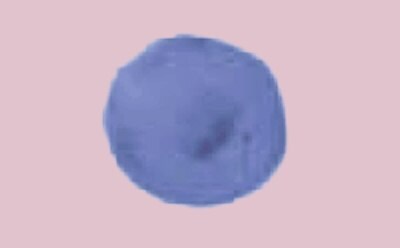Pseudomonas Media and Tests
Jvo Siegrist
Analytix Volume 2007 Article 5
Detection, Identification, Differentiation, and Cultivation of Pseudomonas Species
Pseudomonas are motile (one or more polar flagella), rod-shaped, and aerobe Gram-negative bacteria. They are found almost everywhere: in soil, water, plants, and animals. In most cases, it is not pathogenic and can be beneficial. For example, P. putida is used as a bio-scrubber to aid in the biodegradation of diverse organic compounds in polluted air and wastewater. However, P. aeruginosa is an infamous opportunistic human pathogen most commonly affecting immuno-compromised patients. Along with P. maltophilia, it accounts for most human infections. Pathogenic Pseudomonas are found throughout the body, most commonly in the urinary tract, respiratory tract, blood, and wounds.

Figure 1.HiFluoro Pseudomonas Agar under UV light
Rugged and opportunistic, Pseudomonas use a wide range of nutritional sources, even very simple nutritional environments without any organic compounds. They can remain viable for a long time in many different habitats, under adverse conditions. They are also widespread, being found in water, saline solutions, utensils, and even in cosmetics, pharmaceuticals, and disinfectants as well as many natural and manufactured foods. Psychrotrophic (cold-tolerant) Pseudomonas species are a significant food spoilage problem in refrigerated meat, fish, shellfish, and dairy products. Because Pseudomonas thrive in water systems, they can be the source of contamination in the food and beverage industry.
Media Requirements for Pseudomonas
Pseudomonas are not generally fastidious microorganisms. They can grow on very simple media like Kind Agar, for example, which contains a protein hydrolysate, magnesium chloride, potassium sulphate, and agar. Analytical microbiology leverages a microbe's unique biochemistry to aid in its identification. For example, selective Pseudomonas media use cetrimide, nalidixic acid, cephaloridine, penicillin G, pimaricin, malachite green, and other inhibitory agents. The proteolytic activity, lipolytic activity, fluorescent pigment formation, nitrate utilization, glutamate utilization, hemolytic reaction, and other biochemical reactions are used in the media for the identification and differentiation of Pseudomonas species.
Identification of Pseudomonas
Pseudomonas gives negative Voges Proskauer, indole, and methyl red tests, but a positive catalase test. While some species show a negative reaction in the oxidase test, most species, including P. fluorescens, give a positive result (Figure 2). Another feature associated with Pseudomonas is the secretion of pyoverdin (fluorescein, a siderophore), a fluorescent yellow-green pigment under iron-limiting conditions. Certain Pseudomonas species may also produce additional pigments, such as pyocyanin (blue pigment, a siderophore) by P. aeruginosa, quinolobactin (yellow, dark green in presence of iron, a siderophore) by P. fluorescens, a reddish pigment called pyorubrin and pyomelanin (brown pigment). On blood agar, a hemolytic reaction can be observed.

Figure 2a.Oxidate test shows a negative result since there is no change in the color.

Figure 2b.Oxidate test shows positive result when the sample turns deep purple, thus identifies the presence of P. fluorescens.
Scientific Classification of Pseudomonas |
|---|
Metabolism in Pseudomonas
Pseudomonas utilizes sugars as an energy source by using the Entner-Doudoroff pathway with pyruvate as the end product (dissimilation). The reaction utilizes a different set of enzymes from those used in glycolysis and the pentose phosphate pathway. Fermentation catabolism is not observed in Pseudomonas, but some species, like P. aeruginosa, P. stutzeri and P. denitrificans, can use nitrate as an electron acceptor instead of oxygen. Growth can also occur under anaerobic conditions when the denitrification pathway is used.
Products for identification and differentiation of Pseudomonas
We supply a wide array of products for the detection, identification, differentiation, enumeration, and cultivation of Pseudomonas, using its biochemical characteristics, including a Gram staining kit, and many types of selective growth media and diagnostic tests.
- Non-selective broths
- Selective Enrichment Broths & Biochemical Identification Broths
- Non-selective Agars for Cultivation, Enumeration, and Isolation
- Non-selective Agars for Differentiation
- Selective Agars for Detection and Isolation
- Selective Agars with Differential System for Differentiation, Detection and Isolation
- Diagnostic Tests for Pseudomonas
References
To continue reading please sign in or create an account.
Don't Have An Account?